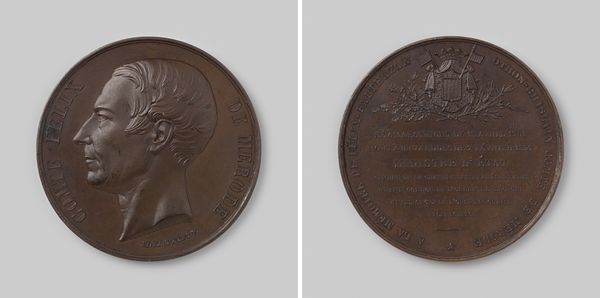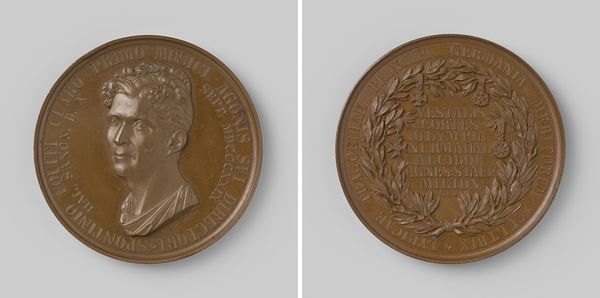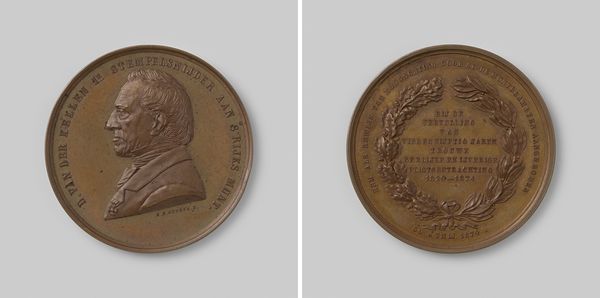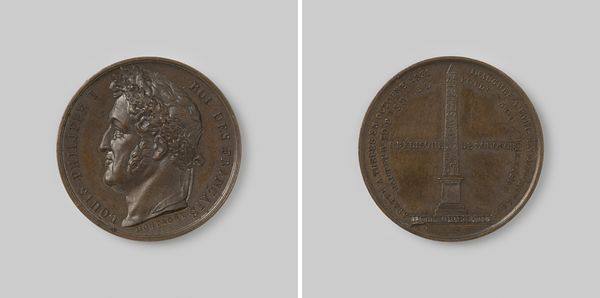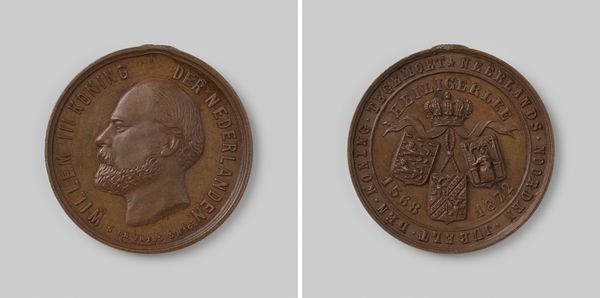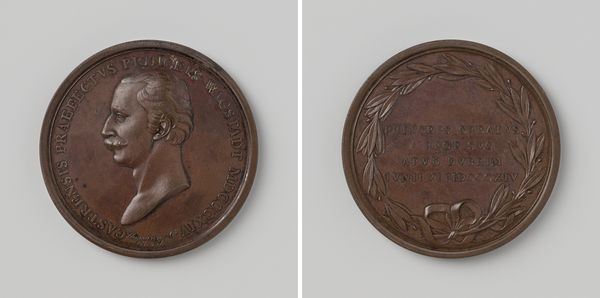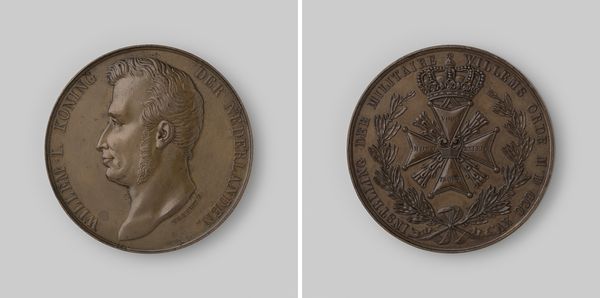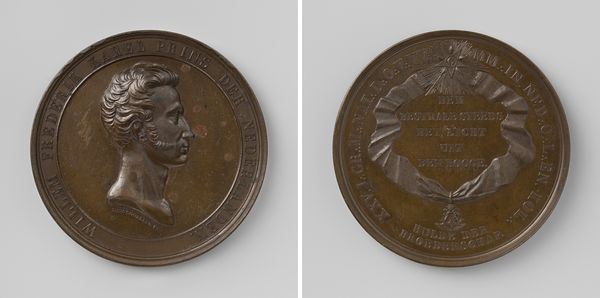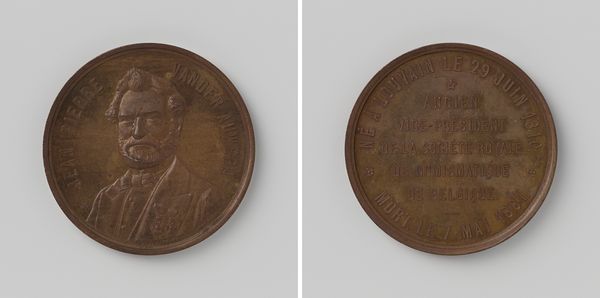
metal, bronze, sculpture
#
portrait
#
metal
#
sculpture
#
bronze
#
sculpture
#
history-painting
#
academic-art
Dimensions: diameter 4.4 cm, weight 31.70 gr
Copyright: Rijks Museum: Open Domain
Salomon de Vries created this bronze commemorative medal in 1872 to mark the death of Johan Rudolph Thorbecke. De Vries employed a striking process here: die-striking, a technique often used for coins and medals, where a design is impressed into metal using hardened steel dies. Bronze, with its reddish-brown hue, was commonly used for commemorative objects, lending a sense of permanence and solemnity. But the sharp, precise details achieved through die-striking elevate this from a simple cast object. Look closely, and you will see the crisp portrait of Thorbecke and the fine lettering listing significant dates in his life. This process also implies a certain level of mechanization and repetition, a reflection of the industrial age in which it was made. The medal wasn't individually sculpted, but rather produced through a repeatable process, making it accessible to a wider audience. It is a reminder that even commemorative art is often bound up with the means of production, labor, and wider distribution.
Comments
No comments
Be the first to comment and join the conversation on the ultimate creative platform.
